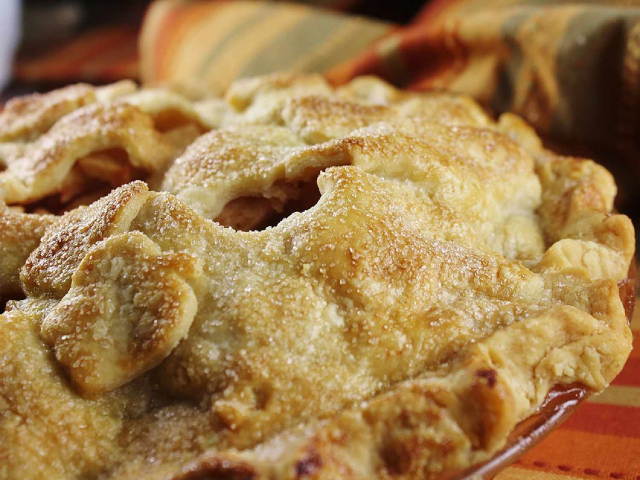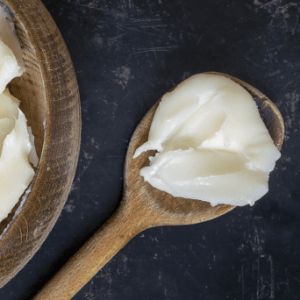As we reported a couple of days ago, trendy, food-forward cooks are using lard in their creations again – after decades of abstinence over health concerns. And folks are enthusing over the flavour and texture it imparts to al kinds of foods. But would you use it?
 Perfect, light, flaky Pie Crust: The kind only achievable using lard?
Perfect, light, flaky Pie Crust: The kind only achievable using lard?
Why lard now?
It’s coming back into vogue as trendy, food-forward chefs and old-school bakers come out of their culinary closets and admit they still prefer lard for a number of cooking applications.
These folks have finally owned up to their ‘lard love’ in light of growing evidence that saturated fats are not as bad for you as was once believed. They tend to lean on research that claims trans fats are worse.
The history
In a few words, lard used to be the go-to fat for most cooks. At least, up until the early 1900s, when a series of sensational newspaper and magazine articles demonized the stuff. The issue then was not tat it was unhealthy. Folks were incensed at reports of conditions in slaughter houses, of which lard was a major byproduct. Working conditions were said to be horrendous. And sanitation was a very low priority.
Thus began the fall of the once-ubiquitous fat from culinary king to pauper. By the 1950s, lard was almost forgotten by many cooks, having been swapped by their mothers in favour of vegetable shortening. The mantra was, ‘more humane and safer than lard’.
The final blow came in later in the last century when science condemned saturated fats – ‘animal fats’ in general – as a primary cause of heart disease and other dreaded ailments.
Shortening’s ‘day in court’
Shortening was to have it’s day in court early in this century. Though high in ‘safer’ unsaturated fat, it still contained significant amounts of trans fat. And trans fat was declared to be more dangerous than saturated fat! Accordingly, it was vilified by science as lard had been before it.
That was the pivotal point at which the MDs and dieticians began to simply tell folks, ‘Solid fat – bad. Liquid fat – good.” Which was an easy way for the masses to differentiate between healthy and unhealthy fats. By that rule, margarine also fell out of favour. It had been, for a few decades, at least, the authorized vegetable fat alternative to butter. Which had been co-condemned with other saturated fats.
As Hamlet said to his best bud, Laertes… “There’s the rub!” The problem with ‘solid’ vegetable fats is they have to undergo a process called hydrogenation to become solid. And that creates trans fats.
The overall effect of chalking up that big, black mark against solid vegetable fats was that they were lowered in the estimation of the experts to the same level as lard. Lard wasn’t elevated…
Greatest impact
The hard fats debate impacts us all in one particular area: Pastry. To make classic short pastry, you have to use a solid fate. The choice was a no-briner. Really nbot even a choice – when lard was the defacto standard in western kitchens.
There was some disappointment among serious cooks when shortening displaced lard as the solid fat of choice. The replacement was deemed inferior in terms of the flavour it imparted to foods. And it just couldn’t match the light, flaky texture lard produced. So, instead of being a simple, everyday tack, pastry-making became more of a science, as folks tried to perfect the process using temperature-temperamental shortening.
My take
I have not used lard for years. My response to the mounting health claims against saturated and trans fats has been to switch to vegetable oils (i.e.- liquid fats) wherever possible. But I’m seriously considering putting lard back on my culinary roster. If only for pie crusts and their ilk…
My questions to you:
Do you use lard? If so, for what applications?
Do you feel it adds flavour and texture that shortening can’t match?
If not, would you consider switching back to lard for occasional, special jobs like pie crust?
Muse on that…
~ Maggie J.

